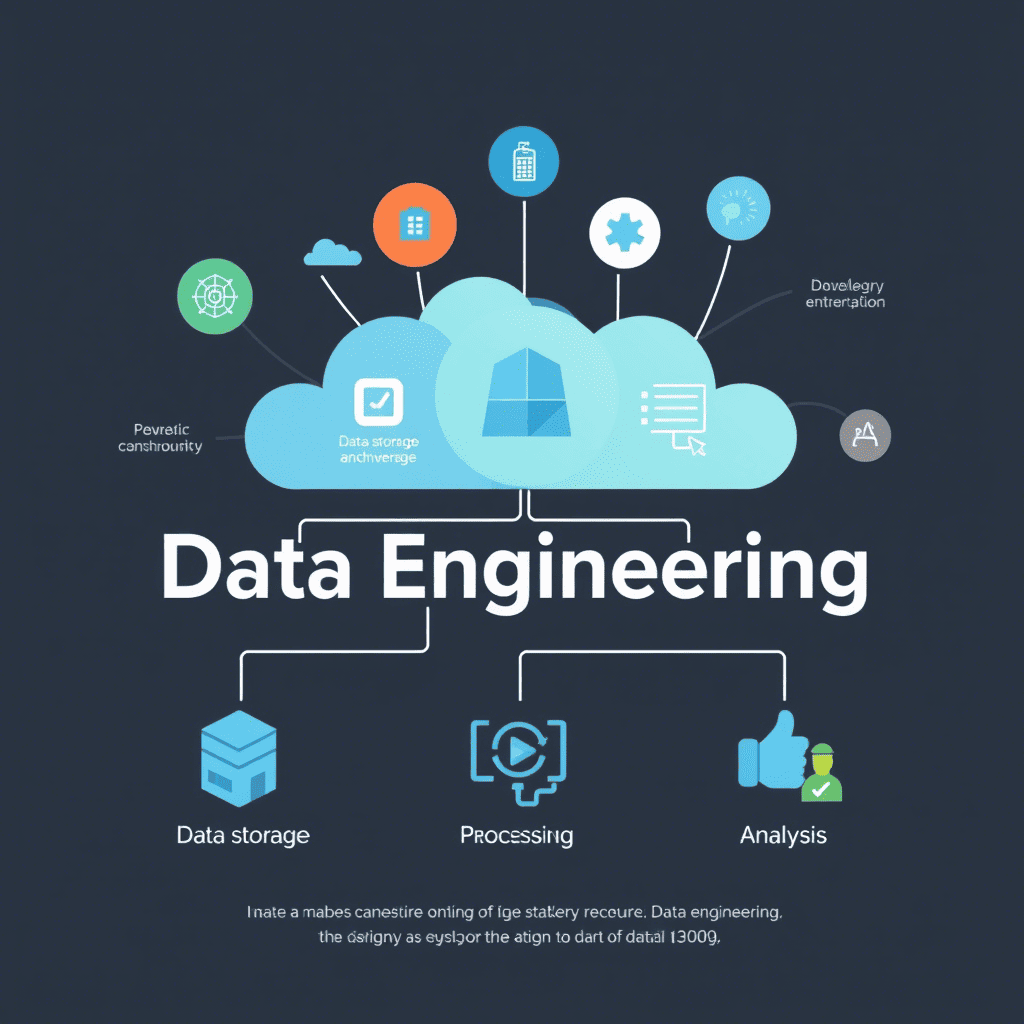Highlight text to turn on text-to-audio feature!
What is Data Engineering?
Data engineering is a field within the broader domain of data science and information technology that focuses on the design, construction,
and maintenance of systems and infrastructure for collecting, storing, processing, and analyzing large volumes of data.
It involves creating pipelines that transform raw, unstructured, or semi-structured data into structured formats that can be easily accessed and used by data scientists, analysts, and business intelligence (BI) tools.
In essence, data engineering lays the groundwork for data-driven decision-making by ensuring that data is accessible, reliable, and scalable.

What Does Data Engineering Do
- Data Collection : Data engineers build systems to collect data from various sources, such as databases, APIs, web scraping, IoT devices, and more.
- Data Storage : They design and manage data storage solutions, including data warehouses, data lakes, and cloud-based storage systems like Amazon S3, Google BigQuery, or Azure Data Lake.
- Data Transformation : Raw data often needs to be cleaned, transformed, and enriched before it can be analyzed. Data engineers create ETL (Extract, Transform, Load) or ELT (Extract, Load, Transform) pipelines to process this data.
- Data Integration : Data from multiple sources often needs to be combined. Data engineers ensure that data from different systems can be integrated seamlessly.
- Data Pipeline Automation : Data engineers automate the flow of data through pipelines, ensuring that data is continuously updated and available for analysis.
- Data Governance & Security : They also implement security measures to protect sensitive data and ensure compliance with regulations like GDPR or HIPAA.
How Does Data Engineering Work?
Data engineering typically follows a series of steps:
- Data Ingestion : The first step is to gather data from various sources. This could involve pulling data from relational databases, NoSQL databases, streaming platforms like Apache Kafka, or even flat files.
- Data Storage : Once the data is collected, it needs to be stored in a way that is both efficient and scalable. Data engineers choose between different storage architectures, such as:
Data Warehouses : Optimized for structured data and fast querying (e.g., Snowflake, Redshift).
Data Lakes : Designed for storing large volumes of raw, unstructured data (e.g., Hadoop, AWS S3).
- Data Processing : After storage, the data is processed using tools like Apache Spark, Apache Flink, or SQL-based transformations. This step involves cleaning, filtering, aggregating, and enriching the data.
- Data Transformation (ETL/ELT) :
ETL (Extract, Transform, Load) : Data is extracted from sources, transformed into a usable format, and then loaded into a data warehouse.
ELT (Extract, Load, Transform) : Data is first loaded into a data lake or warehouse and then transformed as needed.
- Data Orchestration : Tools like Apache Airflow, Luigi, or Prefect are used to schedule and orchestrate complex workflows, ensuring that data pipelines run smoothly and efficiently.
- Data Monitoring & Maintenance : Data pipelines need to be monitored for performance, errors, and bottlenecks. Data engineers use monitoring tools to ensure that data flows are consistent and reliable.
Who Uses Data Engineering?
- Data Scientists : Data scientists rely on data engineers to provide clean, structured datasets that they can use for machine learning models, statistical analysis, and predictive analytics.
- Business Analysts : Business analysts use data engineering outputs to generate reports, dashboards, and insights that help guide business decisions.
- Data Analysts : Similar to business analysts, data analysts use data pipelines to extract insights from large datasets, often using BI tools like Tableau or Power BI.
- Machine Learning Engineers : ML engineers depend on data pipelines to feed models with real-time or batch data for training and inference.
- IT Teams : IT teams collaborate with data engineers to ensure that data infrastructure is secure, scalable, and compliant with organizational policies.
Why is Data Engineering Important?
- Foundation for Data-Driven Decisions : Data engineering provides the infrastructure that enables organizations to make data-driven decisions. Without proper data pipelines, businesses would struggle to access the insights they need to stay competitive.
- Scalability : As companies grow, so does the volume of data they generate. Data engineering ensures that data systems can scale to handle increasing amounts of data without compromising performance.
- Real-Time Insights : Modern businesses often require real-time data processing to respond quickly to market changes. Data engineering enables real-time data pipelines that allow for instant insights.
- Security and Compliance : Data engineers implement security protocols and ensure compliance with data protection regulations, protecting sensitive information from breaches and unauthorized access.
Additional Important Information:
Emerging Trends in Data Engineering :
- Cloud-Native Solutions : Many organizations are moving their data infrastructure to the cloud (e.g., AWS, Google Cloud, Azure) for better scalability and cost efficiency.
- Serverless Architectures : Serverless computing (e.g., AWS Lambda, Google Cloud Functions) allows data engineers to build pipelines without worrying about server management.
- Data Mesh : A decentralized approach to data architecture where data ownership is distributed across different teams, rather than centralized in a single data team.
- DataOps : Inspired by DevOps, DataOps focuses on improving collaboration and automation in data pipeline development, similar to how DevOps streamlines software development.
Future of Data Engineering :
- Hybrid Cloud Solutions : Many organizations are adopting hybrid cloud strategies, combining on-premises infrastructure with cloud-based solutions for flexibility and cost savings.
The Bottom Line:
Data engineering is a critical component of modern data infrastructure, enabling organizations to harness the power of their data.
It bridges the gap between raw data and actionable insights, providing the foundation for data science, analytics, and business intelligence.
As data continues to grow in volume, variety, and velocity, the role of data engineering will only become more important, driving innovation and efficiency across industries.

